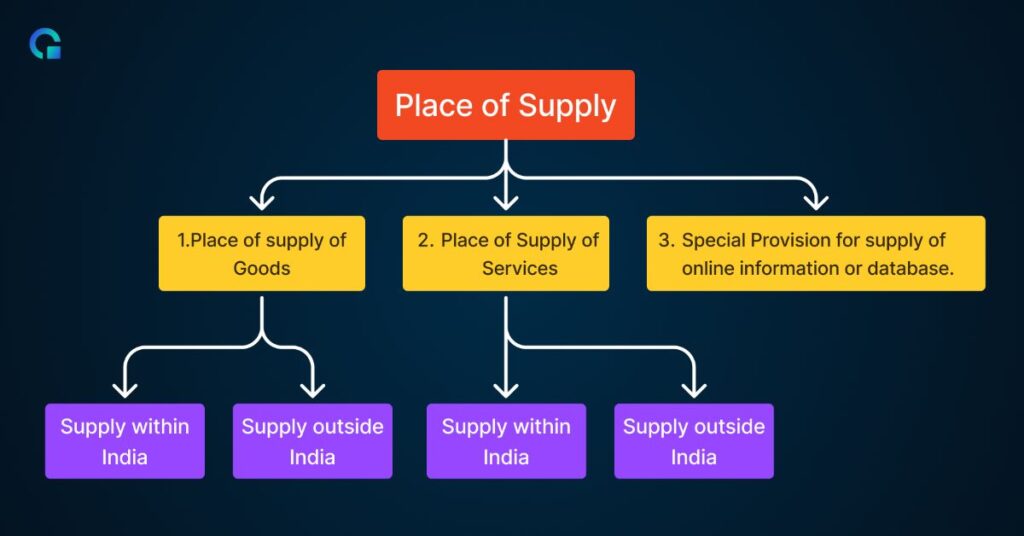Home » What is Supply of Goods and Services under GST in India?
- TRENDING ARTICLE
What is Supply of Goods and Services under GST in India?

Anurag Mittal

The Goods and Services Tax (GST) is a game-changer in India’s tax landscape, simplifying the complex web of indirect taxes. To navigate this effectively, it’s essential to understand how GST treats the supply of goods and services. Let’s break it down in a way that’s easy to grasp, with examples to make the concepts clearer.

Table of Contents
ToggleWhat Does ‘Supply’ Mean Under GST?
Definition of Supply
In GST, the term ‘supply’ is the foundation. As per Section 7 of the Central GST Act, 2017, supply includes any sale, transfer, barter, exchange, license, rental, lease, or disposal made for consideration (payment) in the course of business.
For example, if you run a bakery, selling cakes, renting out bakery equipment, or even bartering cakes for another service all qualify as supplies. It also covers services brought into India (imports), even without payment.
Types of Supply: Intra-State vs. Inter-State
- Intra-State Supply: If a business in Mumbai sells to a customer in Pune (both in Maharashtra), it’s an intra-state supply. Here, both Central GST (CGST) and State GST (SGST) are applied.
Inter-State Supply: If a business in Mumbai sells to a customer in Bangalore, it’s an inter-state supply. For these transactions, Integrated GST (IGST) is charged.
Supply of Goods vs. Services
Supply of Goods: Goods include tangible items like machinery, raw materials, or even finished products. Under GST, the supply of goods is classified further into:
- Composite Supply: When goods or services are naturally bundled and provided together. For instance, when you buy a laptop with pre-installed software, the software is naturally bundled with the laptop. The rate for the laptop (the principal supply) applies to the entire bundle.
- Mixed Supply: A package of goods or services sold together for a single price but can also be sold separately. For example, a Diwali gift hamper containing sweets, a watch, and a perfume. Each of these items could be sold separately, but since they’re sold together, the highest GST rate among them applies to the entire package.
Supply of Services: Services under GST cover anything that isn’t goods. This includes activities like renting office space, providing consulting services, or digital marketing. Like goods, services can also be classified as composite or mixed supplies.
When and Where Does Supply Happen?
Time of Supply: When GST Becomes Payable
Knowing when to pay GST depends on the ‘time of supply :
- For Goods: It’s the earliest of these three:
- When you issue an invoice or the last date you should have issued it.
- When you receive payment.
- When the buyer records receipt of goods in their books (if before the invoice is issued).
- For Services: It’s also the earliest of these three:
- When you issue an invoice or the due date of the invoice.
- When you receive payment.
- When the buyer records receipt of services.
Place of Supply: Determines the Type of Tax Applicable
The place of supply helps decide if the transaction is intra-state or inter-state:
- For Goods: Generally, it’s where the delivery happens. For example, if goods are shipped from Chennai to Kolkata, Kolkata is the place of supply.
- For Services: It depends on who receives the service:
- If it’s a registered business, the location of the recipient.
- If it’s an unregistered individual, the location of the service provider.
How to Value the Supply?
The value of the supply is the price on which GST is calculated, usually the transaction value (what the buyer pays). But if it involves related parties or isn’t at arm’s length, special valuation rules may come into play.
Taxable vs. Non-Taxable Supplies
- Taxable Supplies: These are goods or services on which GST is applicable, such as most manufactured items or professional services.
- Non-Taxable Supplies: These are outside GST’s scope, like alcoholic liquor for human consumption, which is taxed separately by state excise laws.
- Exempt Supplies: Certain goods and services are exempted to promote public welfare, like healthcare services, educational services, and unprocessed food items.
- Zero-Rated Supplies: These include exports and supplies to Special Economic Zones (SEZs). While no GST is charged, the supplier can claim a refund of the input tax credit (ITC) used for making such supplies.
Understanding the Reverse Charge Mechanism (RCM)
Typically, the supplier pays GST, but under reverse charge mechanism RCM, the buyer pays GST directly to the government. This applies in specific cases like:
- Import of goods or services.
- Purchases from unregistered dealers.
- Certain notified services, such as legal services provided by lawyers.
Wrapping Up: Key Takeaways
Understanding the different aspects of supply under GST—like the time, place, and value of supply, as well as exemptions and reverse charges—is crucial for every business. It ensures compliance, helps in planning, and minimizes tax liabilities. Stay updated with any changes in the law to remain compliant and optimize your tax strategy.
Start using OLAO today
- Get Paid Faster. Boost Cash Flow
- Powerful, automated core accounting
- Hands-free bank reconciliation
Frequently Asked Questions
Intra-state supply occurs within the same state, attracting CGST and SGST, while inter-state supply occurs between different states, attracting IGST.
For goods, the place of supply is where the delivery happens. For services, it depends on the recipient's location or the service provider's location.
RCM is where the recipient, not the supplier, is liable to pay GST directly to the government, applicable in certain cases like imports or services from unregistered dealers.
Composite supply includes naturally bundled goods/services sold together at a single price, while mixed supply involves a combination of goods/services sold together but not naturally bundled.

